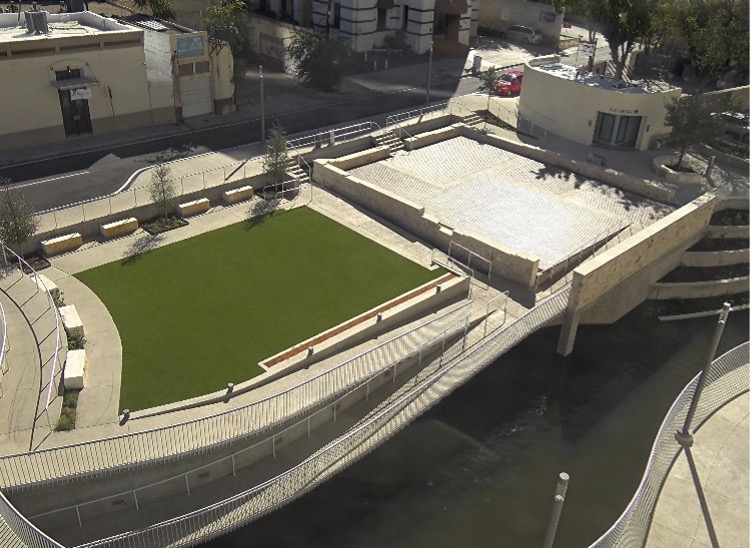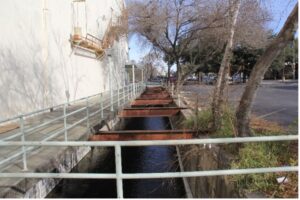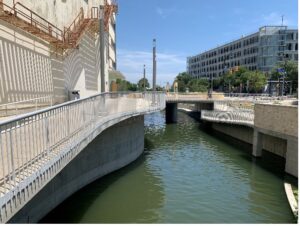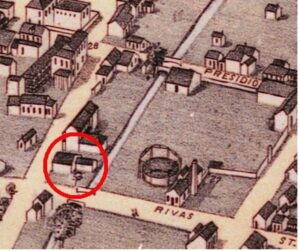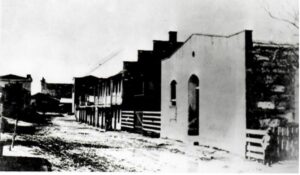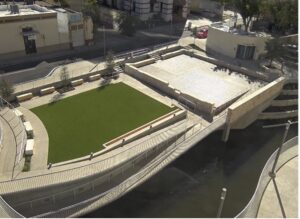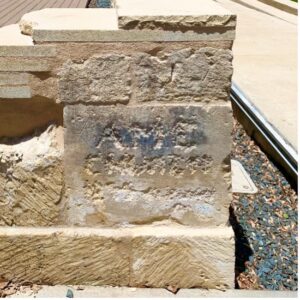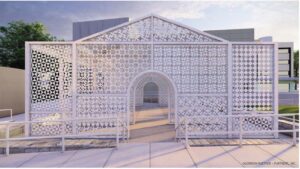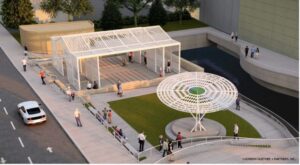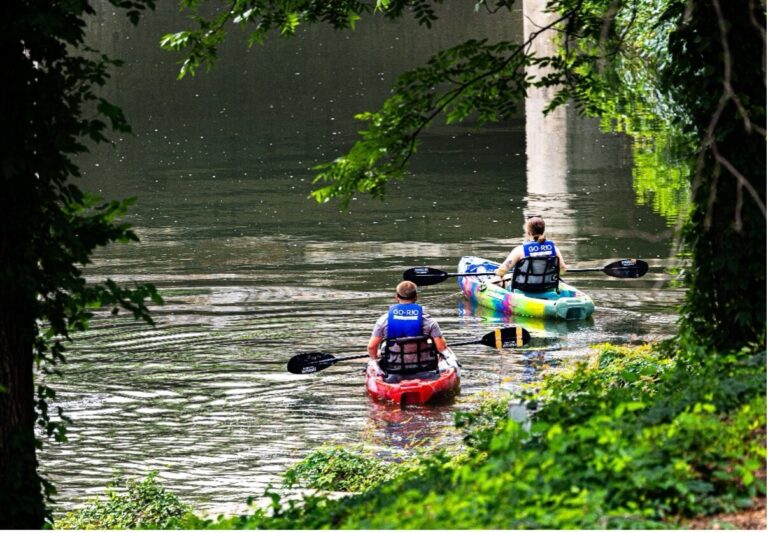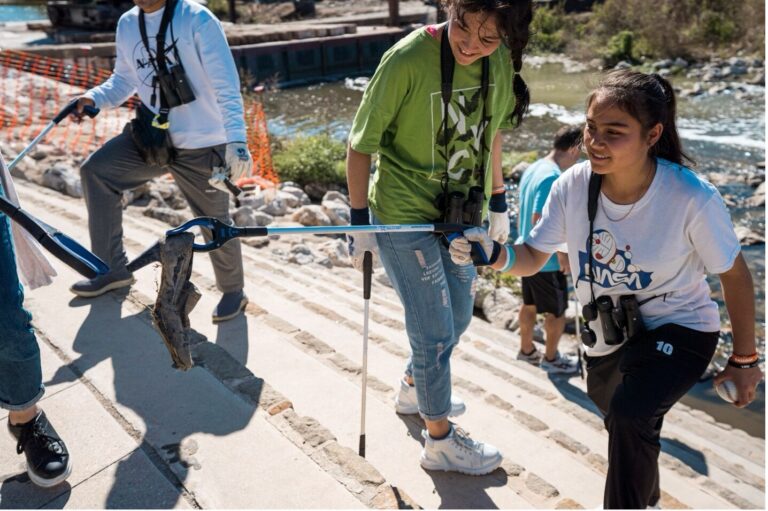Welcome to the Creative Currents series! Public art, cultural programming, and artistic design enhancements express what is authentic about today’s culture and explore the historical significance of area waterways through a contemporary art lens. This series provides an inside look at the many ways artists are incorporated into the San Antonio River Authority (River Authority) projects, including the growing San Pedro Creek Culture Park.
In celebration of Black History Month, we are looking back on one of the biggest findings during the reconstruction of the San Pedro Creek Culture Park – what it meant then, its impact today, and what its future holds.
In February 2020, while deepening and widening San Pedro Creek’s channel, historical foundations at W. Houston and Camaron Street were revealed. Buried beneath an ordinary parking lot, the site brought a significant past back to life.
San Pedro Creek before (2016, left) and after reconstruction (2023, right) between the Alameda Theater and the St. James AMEC Culture Crossing
Home to a richly layered story of a rapidly growing San Antonio, the foundations are a testament to the confluence of ethnic groups who have directly shaped the unique culture of San Antonio.
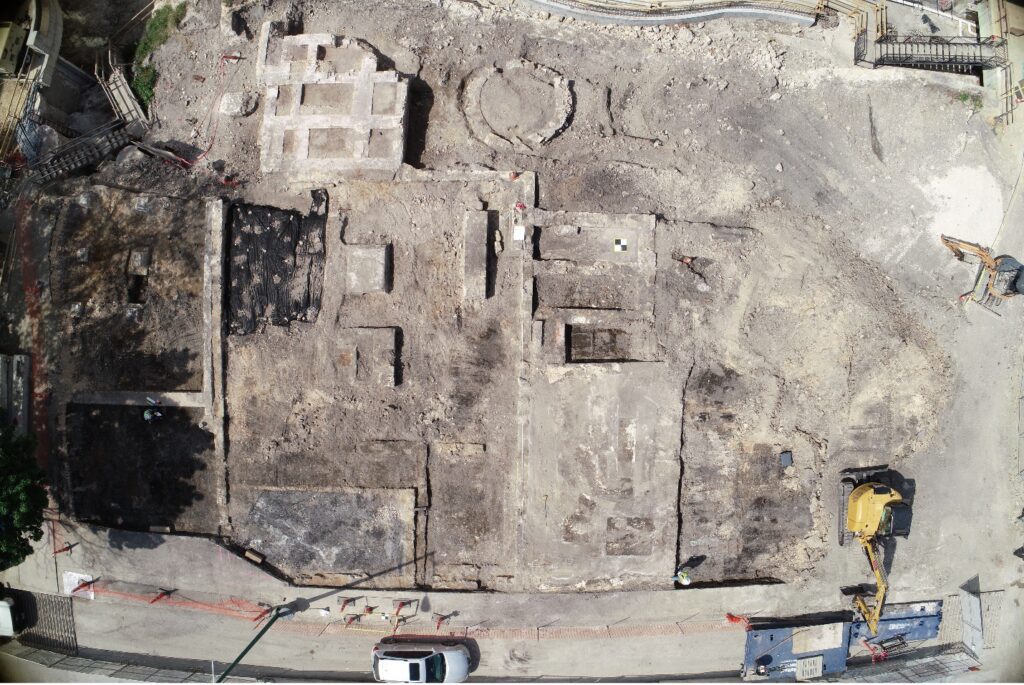
The archaeological site during excavations
Key to this marvelous chronicle is the St. James African Methodist Episcopal Church St. James AME Church). Though it is just one chapter of this archaeological site’s story, it cannot be denied that the AME Church’s legacy is profound. Dating back to 1867, it was the first AME church in San Antonio and only the second in the state of Texas.
The property itself had been home to a soap factory since 1847. Amid the Reconstruction era, the land was purchased by the congregation of the St. James AME Church in 1873. The church played a crucial role in the African American community post-emancipation, becoming a symbol of religious freedom and gathering. To accommodate the growing congregation, the building’s footprint was expanded in 1875, the full extent of which is visible in the preserved archaeological site. This rediscovery connects us to the enduring roots of the still-active St. James AME Church.
Left: The archaeological site as depicted in Augustus Koch’s 1873 aerial map “Bird’s eye view of the City of San Antonio.” Right: Photo of the church in the 1870s
As you can imagine, the unexpected discovery of the archaeological site dramatically changed the space’s original design. Initially set to be the site of an amphitheater to pay homage to the adjacent Alameda Theater, a new design had to honor this storied space. Careful assessment and community input have allowed this site to be rehabilitated as a gathering place to connect with its dynamic history. Now referred to as the St. James AMEC Culture Crossing, the name recognizes the church’s importance and the legacy of other cultures who have called San Antonio home.
Left: St. James AMEC Culture Crossing at the corner of West Houston and Camaron Streets, Right: AME Cornerstone laid in 1875—a tangible landmark of the thriving Reconstruction-era African American community.
In true San Pedro Creek fashion, what better way to tell a story than through public art? Following a nationwide request for qualifications, the San Antonio River Foundation has selected an artist to commemorate and preserve the archaeological site, as well as activate the adjacent turf area at the St. James AMEC Culture Crossing. After receiving nearly 70 submissions, the design selection panel, which included the pastor of the AME Church and other community leaders, chose Gordon Huether. Huether is an experienced public artist; he currently has over 100 pieces on display worldwide.
Renderings of Huether’s proposed designs.
The River Foundation held community engagement sessions on November 16th and 25th of 2023, and the art is currently still in the design phase. With completion and installation expected in February 2025, the future of the archaeological site is set to continue fostering community for decades to come. If you are interested in learning more about this project or would like to donate, please visit the San Antonio River Foundation Website.
Photos from the community engagement session on November 16, 2023
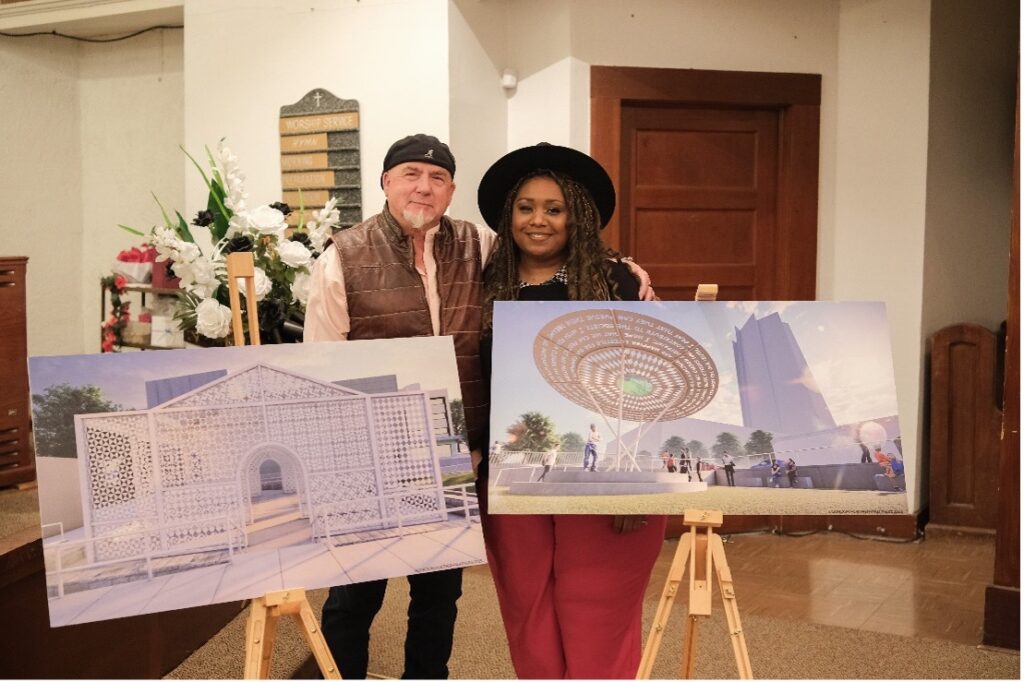
Artist Gordon Huether with San Antonio Poet Laureate Emeritus Andrea “Vocab Sanderson”
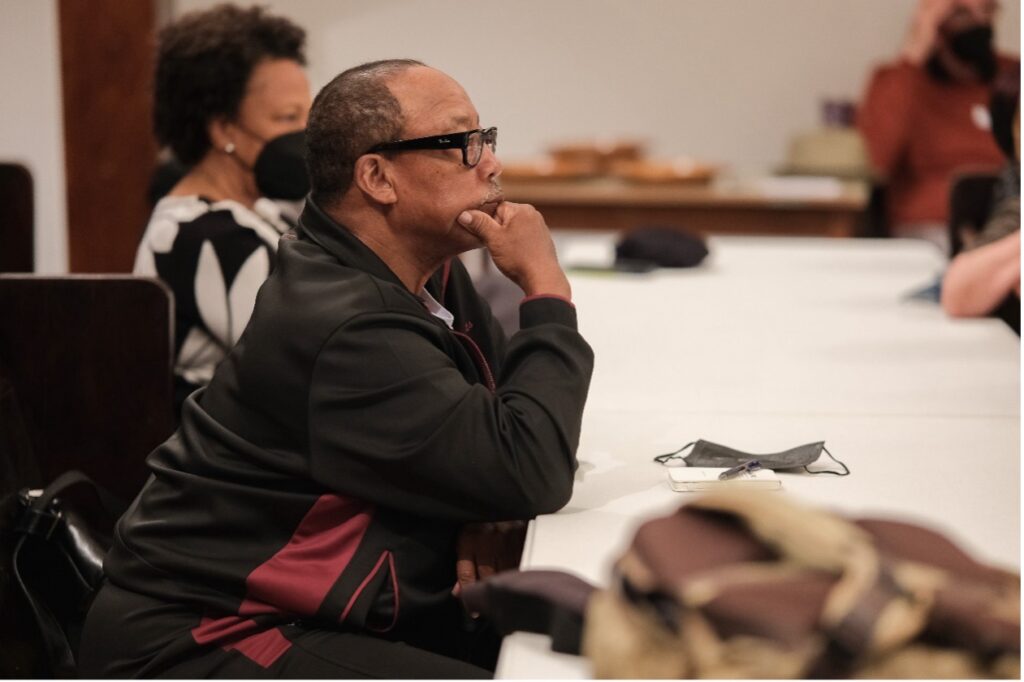
Lon Taylor, Member of the AME Church and the San Pedro Creek Citizens Advisory Committee
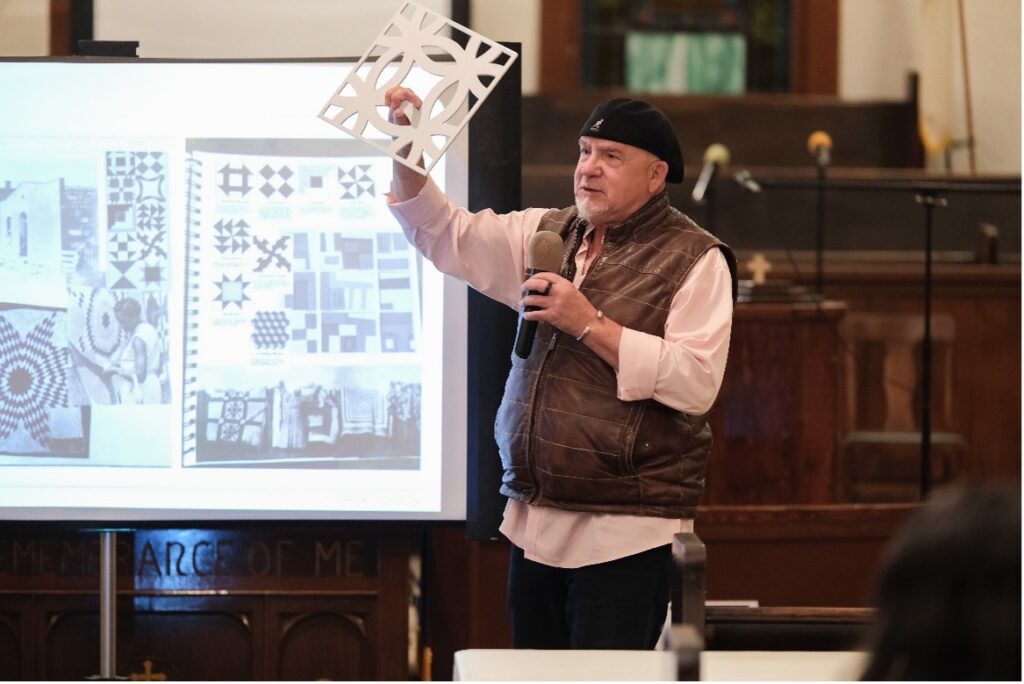
Huether shares a sample of the material using the proposed fabrication process.
For more updates on San Pedro Creek Culture Park and Public Art projects, please follow the River Authority (@sanantonioriver) and River Foundation (@sariverfound) and subscribe to the blog!

